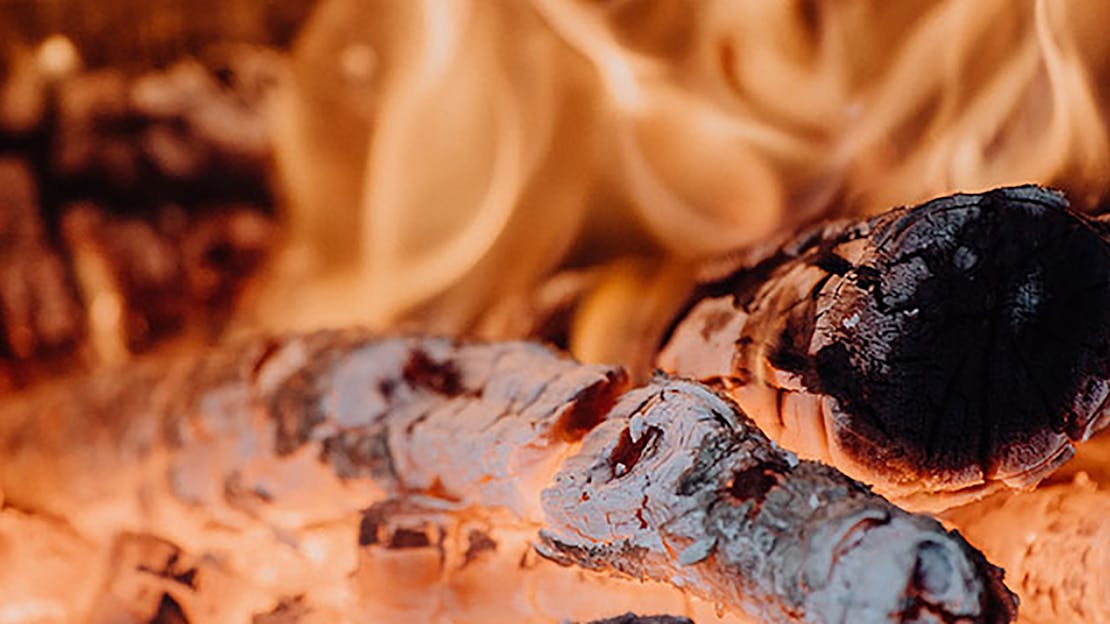
Reusing Your Wood Ash
After you have finished burning all of your high quality firewood, you can often be left with a lot of ash. And wood ash can be a bit of a chore to clean and get rid of but there's some handy uses for the ash that you might have never thought about.
*When using wood ash in the ways below always make sure the ash is completely cool and free of live embers. Wear protective gloves and keep the ash in a tight lidded metal container*
1. Aiding Soil
Wood ashes can be used in lawn soil to boost the pH levels at a fast pace. The ashes work faster than limestone as they are more water soluble. If your garden soil tends to be more on the acidic side, using the ashes to balance that will help your plants and flowers to thrive. The key components the ash brings in is calcium and potassium, a lot of plants require these nutrients to be able to grow effectively however, struggle to draw them in naturally from the soil. Adding in the ashes makes it a lot easier for these key components to be absorbed.
2. Add to your home compost
Adding wood ashes to your indoor or outdoor compost bin can help add a lot of nutrients such as aluminium, magnesium, phosphorus and sodium to the end product. This can provide many benefits to certain plants, who either prefer a balanced pH or a slightly alkaline pH level, especially during the growing season.
If you don't collect compost but want to make a ‘wood ash tea’ this can be done by soaking the ashes in water for around 4-5 days, steeped and strained afterwards can then be applied to the plant soil as needed. On average 3 pounds of wood ash would be added to a 30-gallon bucket of water.
3. Cleaning
Wood ashes can be mixed with a small amount of water to form a paste, this paste can then be used as an abrasive cleaner. It can buff up metals, clean dirty glass, it will even remove sticky residue and adhesive.
Best applied with a cotton cloth and rinsed down with lukewarm water.
4. Homemade soap
It may sound crazy that something as messy as wood ash can be used to make a product we clean ourselves with but when soap was first produced many of it was made at home.
Wood ashes, from hardwood such as ash; hickory and beech, can be combined with water to make lye, a key component in soap. The hardwoods are used because of their potassium content which is needed to be able to produce lye.
Lye is then used in the soap making process, step by step processes using this can be found online should you wish to try this out as a project at home. It's always important to follow instructions from a reputable source.
5. Pest repellant
Wood ashes can be used as a deterrent for pests like slugs, snails and ants to stop them getting at your prized flowers and plants. Simply sprinkle a small amount round the plants and reapply if the rain washes it away.
It's important to note that the ash should be applied directly on to the plants at all.
6. Traction on slippery surfaces
We all know how frustrating slippery surfaces can be during the winter, it's not always as easy to get ahold of gravel or gritting salt. A simple solution if you've got a small area that's a bit on the slippery side, sprinkle over a decent amount of ash to help create traction.
7. Soak up spills
Knocked over the container whilst changing the oil? Or a car having a bit of an oil leak on the driveway? Sprinkle on some wood ashes and let it get to work, it will absorb the liquid. The absorbing properties should also make it easy for you to sweep up the mess and dispose of it after it's done.
8. Putting out a fire
Ash can form an air-tight barrier over a fire to help extinguish the flames. It works by smothering the flames and cutting off the air flow. A great emergency solution when an extinguisher, sand or other means aren't available. Only uses ashes that don't have any clumps of fuel still in them otherwise it will not give the same effect.
Make sure the fire has been extinguished completely and no embers are left smouldering underneath as they could reignite if they gain air flow. Always conduct a check for any heat spots that may be at risk of reigniting, to do this a simple palm test should work (hover a bare palm a few inches above the embers to check for hot spots).
Hopefully these ash uses have given you plenty of ideas and options for your ash. If you want more information about solid fuel, lighting fires and much more. Then we have a lots of high quality articles & guides.
